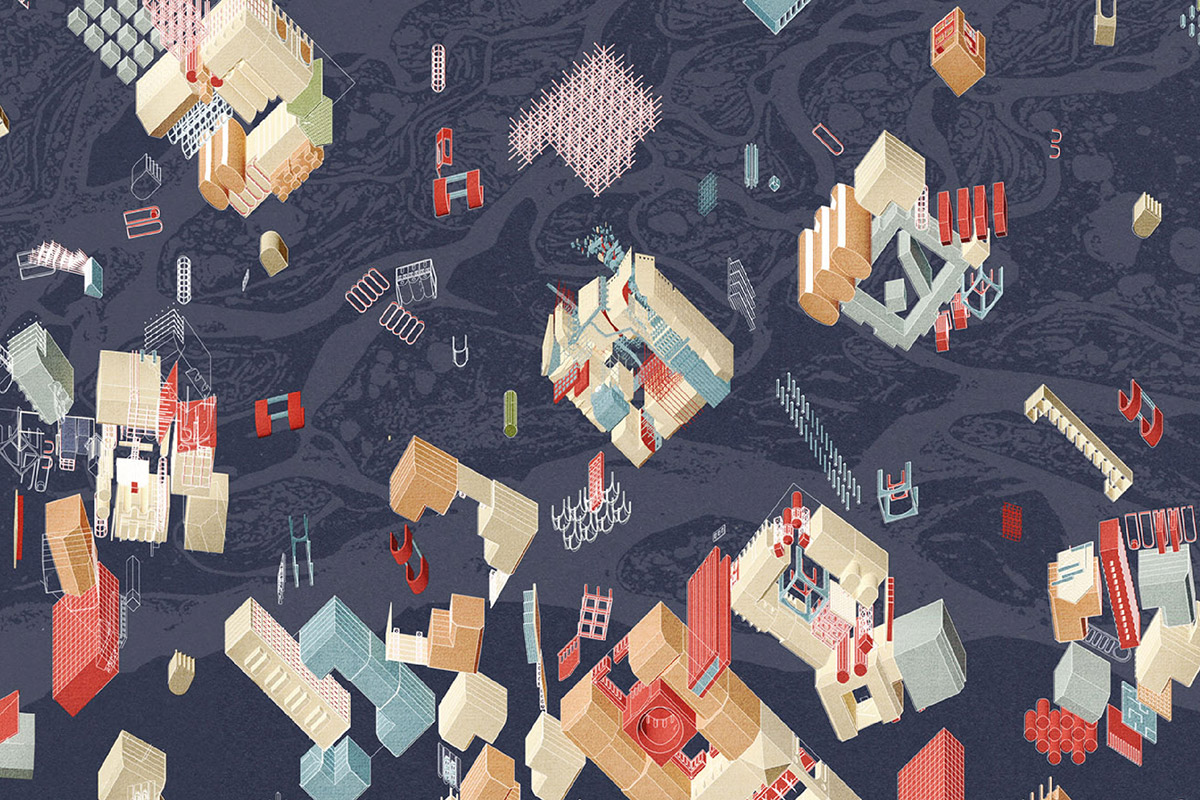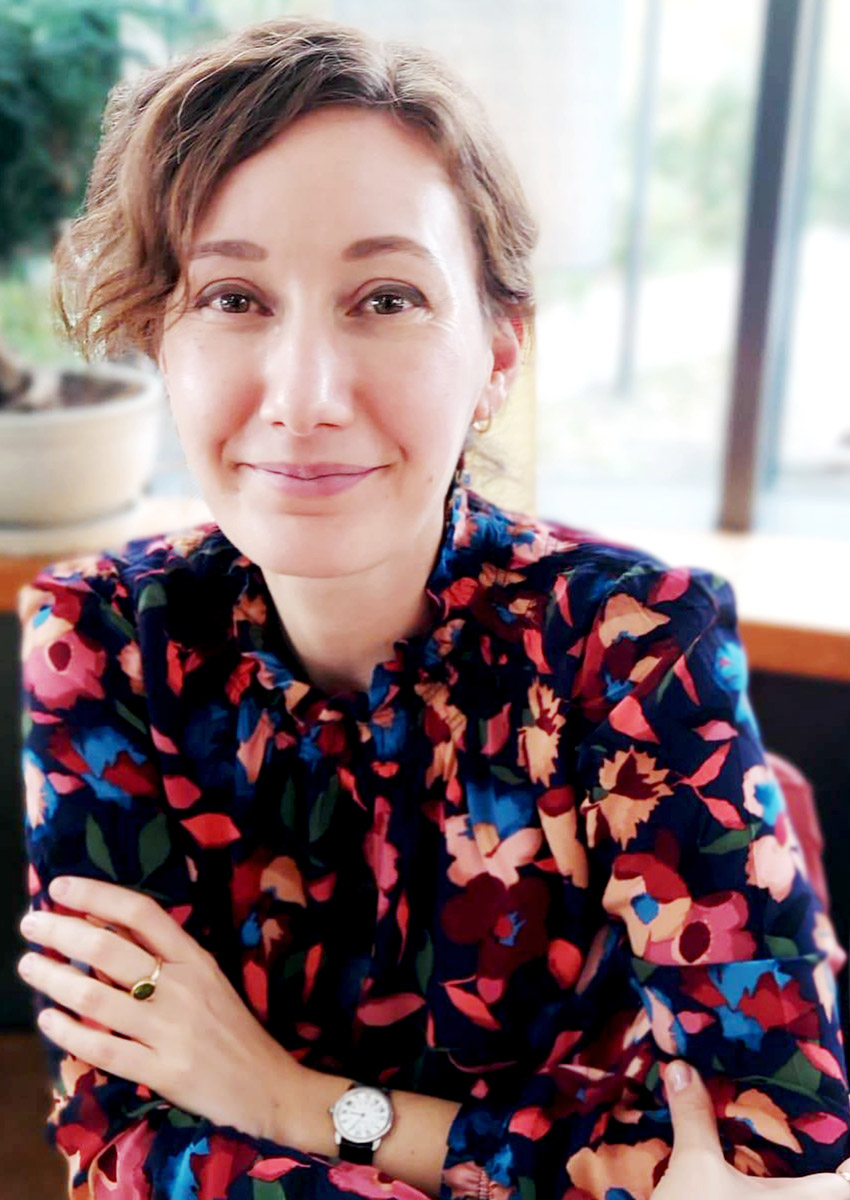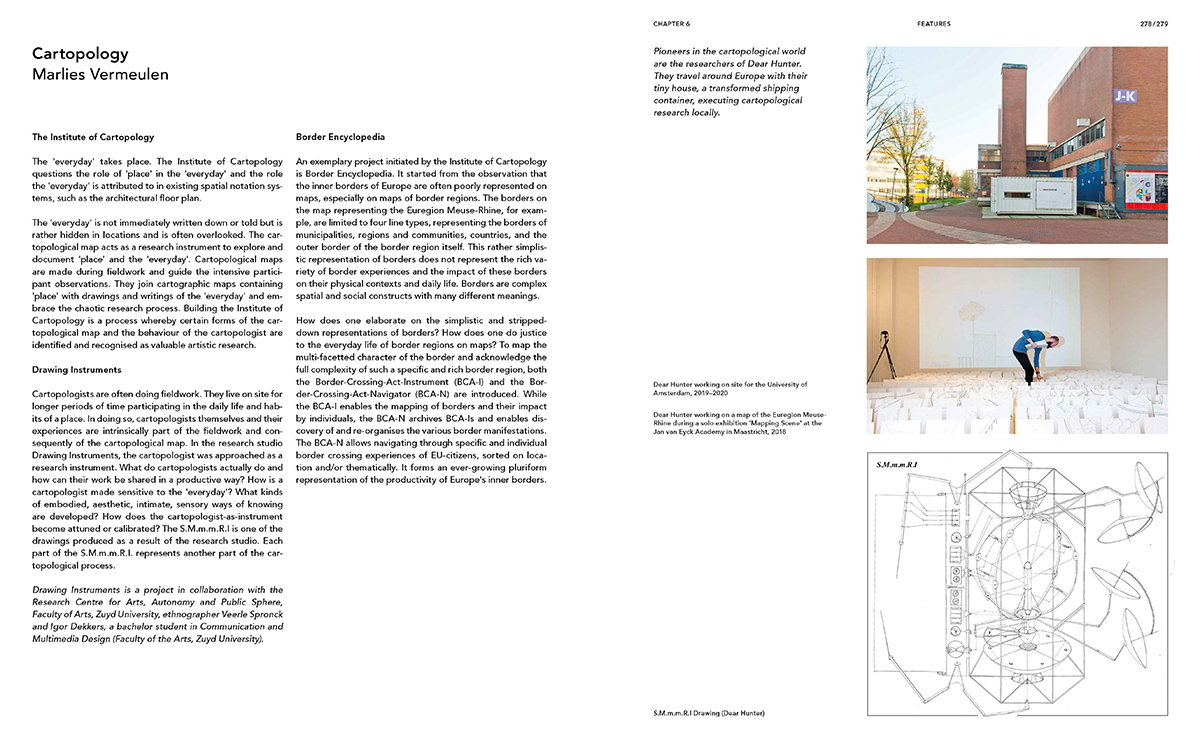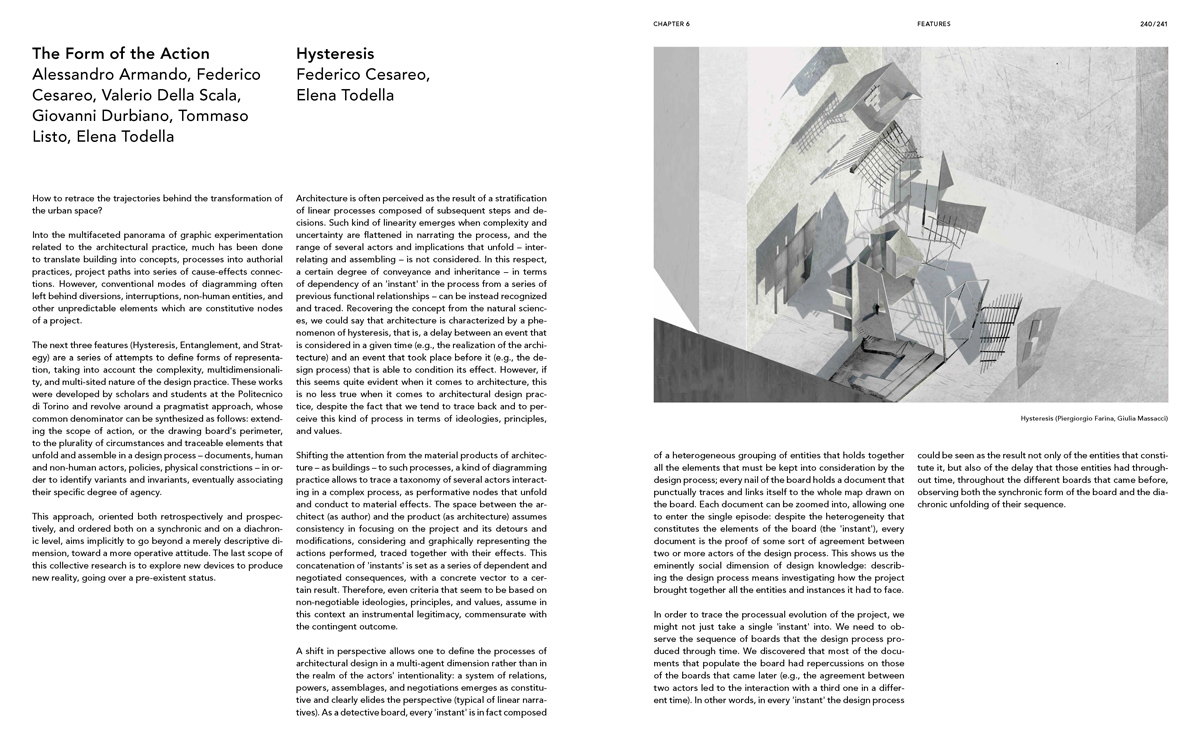23/002
Lidia Gasperoni
Philosopher and Architectural Theorist
Berlin

«As a philosopher, I seek to conceptualize, criticize, and provoke vibrant spaces that have transformative effects on architecture.»
«As a philosopher, I seek to conceptualize, criticize, and provoke vibrant spaces that have transformative effects on architecture.»
«As a philosopher, I seek to conceptualize, criticize, and provoke vibrant spaces that have transformative effects on architecture.»
«As a philosopher, I seek to conceptualize, criticize, and provoke vibrant spaces that have transformative effects on architecture.»
«As a philosopher, I seek to conceptualize, criticize, and provoke vibrant spaces that have transformative effects on architecture.»
Please introduce yourself and describe how you found your way to the field of architecture.
I am an architectural theorist with a background in philosophy, currently research and teaching associate at the Department of Architectural Theory of the TU Berlin. I studied philosophy in Rome, Freiburg im Breisgau, and Berlin, which is where I earned my PhD. My current research is in the philosophy of architecture, aesthetics, and media philosophy, with a focus on environmental transformations and the Anthropocene. Aside from this, I collaborate with architects, such as Matthias Ballestrem, to try and develop an interdisciplinary, non-reductionist language and methodology focused on architecture’s ability to generate critical spaces of embodied knowledge and research – as discussed in the book Epistemic Artefacts (AADR 2023).
While participating in several design projects and courses at the University of Kassel and the TU Berlin, I became aware of the need to develop a spatial language, both theoretical and practical, capable of grasping the transformative agency of design processes and their potential in responding to the current challenges of the climate crisis. At this time, the concept of the diagram emerged as an important area of study for me.
My goal was to engage in theoretical and practical reflection on the function of experimentation in designing spaces (this work led me to publish the book Construction and Design Manual: Experimental Diagrams, DOM publishers 2022)[ah1] . In 2015, I had the privilege of working with Christophe Barlieb at the Chair of Architectonics (traditionally referred to as descriptive geometry).
We worked on what we today call Media Agency (transcript 2020), with the aim of overcoming conventional uses of media and emphasizing the generative character of mediality in works of architecture and design that are practices not only of artefact production but of environmental constitution. With the non-profit association Fieldstations we are trying to connect this generative vision of mediality with issues related to the Anthropocene. This has led us to revise our approach to the relationship between humans and the environment.

Lidia Gasperoni – Portrait
Please describe the project Fieldstations.
Since 2020, I have coordinated together with Christophe Barlieb, Matthias Böttger and Corneel Cannaerts the non-profit association Fieldstations, which was born in 2016 from a synergy between theoretical questions, media and design practices, and fieldwork to rethink how we sense, adapt, and transform space. It is a network of “fieldagents” who are working on transdisciplinary local, practice-based projects, pedagogical initiatives, exhibitions, and transdisciplinary issues.
Christophe Barlieb has been the driving force behind this initiative, which has brought together many people with specific skills and projects. I have followed the work of Fieldstations as a member from the beginning. Its launch took the form of a summer school held at Teufelsberg in Berlin, which aimed to motivate students to take new approaches to the environment by using open-source technologies. In doing so, we created a multidisciplinary synergy that allowed us to discuss and develop our own specific methodology.
Sebastian Müllauer, who runs a creative laboratory on the ground floor of one of the buildings on the site, gave us the opportunity to inhabit the anthropogenic space that is Teufelsberg. This experience prompted us to reflect on and develop methodologies that aim to produce concrete effects. Spatial pedagogy is a central source of environmental practices that have the power to generate a multi-layered form of sensitivity to territorial relationships. Fieldstations aims to adapt spatial practices as media that help transcend disciplines to reveal new fields of knowledge.
What is the potential of Fieldstations?
Fieldstations has the potential to make space for a collective and collaborative dialogue in which everyone feels welcome to participate and to share skills, knowledge, and critical interests. Fieldstations is an attempt to think about collaboratively producing knowledge and effects. The challenge is to have this collective identity coincide with disciplinary, individual commitments and competences articulated through stations. The lecture series “We Need to Talk! Unsere Zeit gestalten” demonstrates that multidisciplinary synergy is central to territorial and social forms of spatial practices today. During the pandemic, we developed our lecture series in an online format, allowing us to communicate our theoretical and practical approaches to a broader international audience.
This online event made it possible to motivate and launch a dialogue on practices and their effects in the here and now, making it easier to address urgencies and interact with people in the present. In this regard, we used a new ecology of presence in which it is possible to share and stream thoughts and visions as a matter of authentic urgency, for example, in education. We are using these formats to create an international network, which we hope to extend as far as possible. And there is still a lot more to do.
There is an urgent need to root critical reflection in different fields of action, which are situated and embedded in specific masteries. And I am learning from the many guests we have invited to the Fieldstations series, such as Marlies Vermeulen of Dear Hunter, who develops fieldwork crossing territories and tracing boundaries, or Vibeke Jensen and Santiago De Waele, who are engaged with both artistic and architectural fieldwork exploring the potential and the efforts of an experiential space of the most western settlement on a remote island in Norway.
What is the essence of architecture, in your view?
In my view, the essence of architecture is the endeavour to transform and document situated space, making it a node for a conscious environmental adaption. In this sense, architecture is an experimental space of possibilities for developing a different sensitivity to the earth and a deeper understanding of its complexity – which also cannot avoid the political and economic discourse.
At the same time, architecture can design spaces as a way of researching, shaping and cohabiting, which has enormous transformative potential. Its media practices are not only practices of spatial design but ways of critical disclosure of different terrestrial phenomena that are profoundly transdisciplinary. Design-driven practices, like the extended senses of a multidisciplinary architectural practice, will also change the way we ask in the future “architecture is not about building?”.
I am interested in grasping the novel force of design-driven practices adapted to environmental transformations that go beyond the conventional building attitude.
What needs to change in the field of architecture, in your view?
Architecture has constantly been changing, but we need a different sense of the driven force that motivates production. In the future, we should build differently and more sustainably incorporating existing buildings – this may sound paradoxical given the destruction caused by the war not so far from us. Sustainability should not reduce architectural design to the purely technical elements of building; it should lead to a radical rethinking of our relationship with the environment, opening up a cultural shift grasping architecture as an experimental and experiential practice. Architecture that does not reposition itself in this way risks becoming anachronistic, a relic, like the critical figure of the Designosaur conceived by Till Zihlmann. In this sense, I argue for philosophy to become a reflexive resource for accessing innovative practices in which human beings can situate and reposition themselves, making use of their new sensory and adaptive capacities.
Creative and unexpected political choices should accompany this rethinking. And the university, which is my main area of activity, should become a radically focused laboratory on terrestrial entanglements and multidisciplinary design. It should become a space in which to think of education as articulating experimental practices of coexistence, a local and global space for understanding, adapting, diversifying, and transforming knowledge beyond technicalities. In this sense, architecture can play an essential role in showing that coexistence cannot be separated from how we design the earth. But I am convinced that in art and architecture, the challenge will be to reflect on and document the effects of the design processes that affect us. Their task will be to develop an environmental sensitivity starting not from a design that generates affects, but rather effects, which we can then communicate and integrate in everyday life.
How do you communicate/present your work?
I use, combine, and hybridize formats such as books, exhibitions, workshops, platforms, teaching, and conferences. I try to set up dialogical formats reinforcing the collaborative and embodied craft of research and teaching practices that respond to current challenges of architecture.
If you were asked to identify one skill that any young architect should learn in-depth at architecture school, what would it be, and why?
Young architects should be able to grasp architecture as a field of spatial practices for constituting situated knowledge within global networks that are not immediately visible. Students should use architectural practices to be critical, imagine, and dream of diverse forms of presence. And, at the same time, they should use them to document the effects of the transformations they are initiating in the various fields of spatial production including bodily experiences and rituals.
What person/collective or project should we look into right now? Please recommend anything or anyone you find inspiring.
Archibloom is a multidisciplinary collective based in Italy, between Rome and Lecce, whose work encompasses architecture, urban planning, and design. Their project Make Roma takes an experimental approach to the representation of the city by mapping different narratives and places. Starting from an investigation into soil, they have undertaken spatial research re-connecting ground, territory, history, and landscape. Architectural knowledge is also valuable as a method for showcasing spatial exploration – surprising and destabilizing (but also mediating between) complex and seemingly unrelated agents. And I would also like to mention the work of Elin Eyborg and Georgia Nowak, whom I had the privilege to meet in the framework of the Fieldexplorer-residency – a collaboration between Fieldstations and the platform Filmexplorer. Their work on constructional sites, materiality, and situated water urban flows is worth to be looked into as experimental research practices.
Project 1
Construction and Design Manual. Experimental Diagrams in Architecture, DOM publishers 2022
Having enjoyed a golden age in the last decades of the twentieth century, diagramming has become a common tool in daily architectural practice. I see a dangerous risk of reducing its function to schematic and digital image production. This book aims to highlight the dangers of this reduction and to show that the diagram as experimental practice can play a crucial role in the contemporary challenges facing architecture.
In fact, it focuses on the synthesis of complexity and on new disciplinary territories at the intersection of the humanities, art, architecture, urban planning, and landscapes. This manual presents experimental diagrams through sensing, analysing, and transforming space. The contributions critically delineate diagrammatic behaviours in architectural history, present design strategies, take the medium to its extreme consequences, and outline future trajectories. This book is the result of a collaborative project involving more than 40 contributors, whose work reveals the experimental character of diagramming and its current relevance.
Project 2
Fieldstations’ Educational Platform Anthropocene Pedagogies in Architecture
Architecture is a material field with a radical impact on the environment. Based on this fact, rethinking the tasks of architectural pedagogy and of spatial practices more generally is a timely endeavour discussed in publications and academic initiatives. In recent years, this paradigm shift of an Anthropocene pedagogy in architecture has become a field of reflexive intersection in which design and construction practices are renegotiated. From this perspective, there is an emerging need to rethink the planetary dimension of architecture as a space of coexistence between humans and non-humans, thereby revealing new constitutive relationships between products and processes and crossing disciplinary boundaries.
The educational platform of Fieldstations aims to connect pedagogical practices that are extending the critical field of education in architecture, but those practices are often isolated. Several researchers internationally are contributing and sharing their practices. This emerging platform provides a basis for focusing on specific topics, discussing common pedagogical experiences, and impacting our notions of spatial agencies from a critical perspective of the Anthropocene. In doing so, it transcends the boundaries between academia and practice.
→ https://fieldstations.net/fields/
Website: lidiagasperoni.com, fieldstations.net, tu.berlin/architekturtheorie
Instagram: @lidia_gasperoni
Photo Credits: © Alessandro Magliani (Cover Image)
Interview: kntxtr, ah + kb, 02/2023


